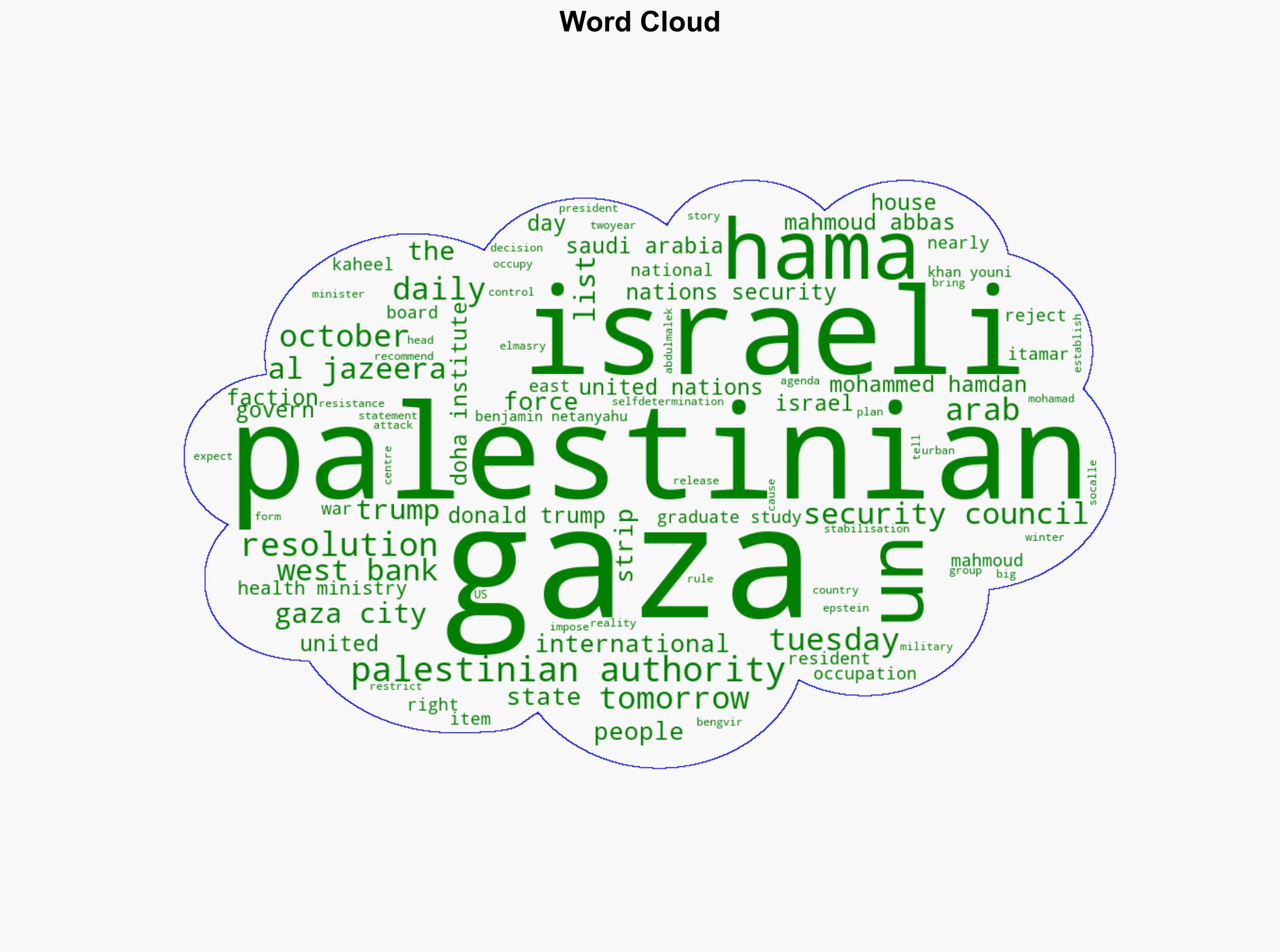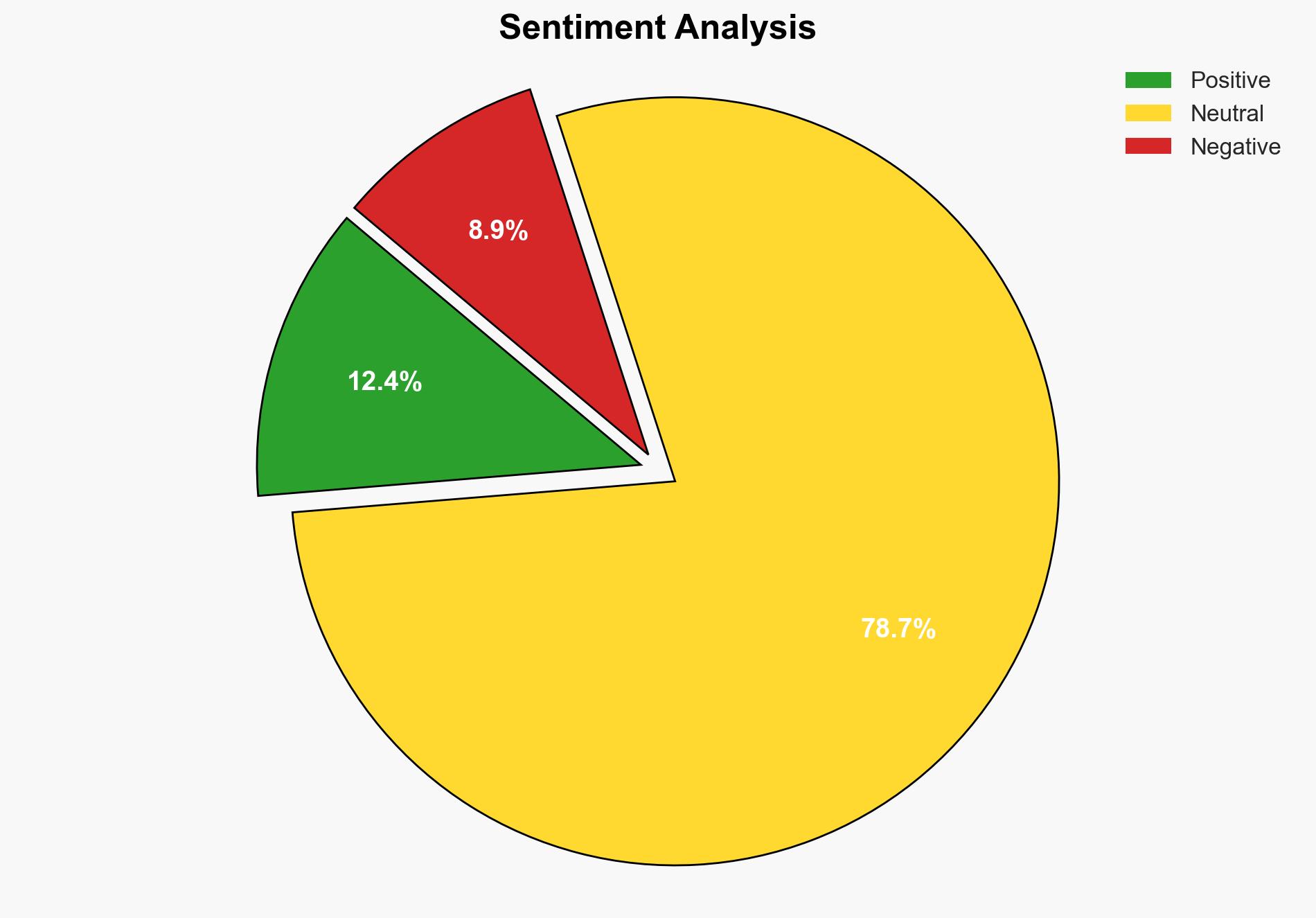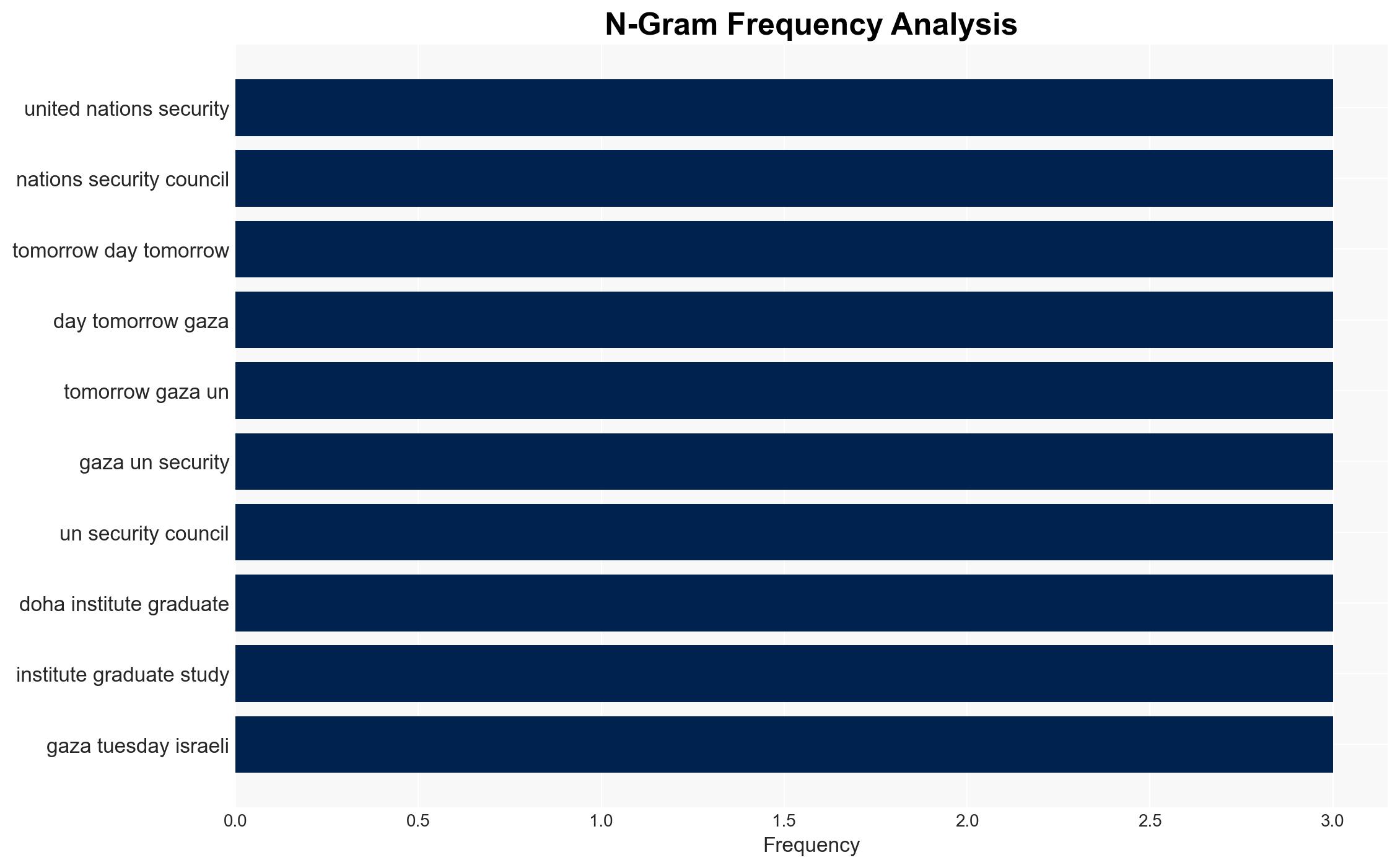Hamas Gaza factions say UN resolution undermines national will – Al Jazeera English
Published on: 2025-11-18
AI-powered OSINT brief from verified open sources. Automated NLP signal extraction with human verification. See our Methodology and Why WorldWideWatchers.
Intelligence Report:
1. BLUF (Bottom Line Up Front)
The UN resolution proposing an international stabilization force in Gaza is likely to exacerbate tensions rather than stabilize the region. The most supported hypothesis is that the resolution will be perceived as an imposition undermining Palestinian self-determination, leading to increased resistance from local factions. Confidence Level: Moderate. Recommended action includes diplomatic engagement with Palestinian factions to address concerns and prevent escalation.
2. Competing Hypotheses
Hypothesis 1: The UN resolution will stabilize Gaza by providing international oversight and reducing Israeli-Palestinian tensions. This hypothesis assumes that international forces can effectively manage local dynamics and that their presence will deter violence.
Hypothesis 2: The UN resolution will be perceived as undermining Palestinian self-determination, leading to increased resistance and potential escalation of violence. This hypothesis is supported by the rejection from Hamas and other factions, who view the resolution as an imposition of foreign control.
The second hypothesis is more likely due to the strong opposition from local factions and the historical context of resistance to perceived foreign intervention.
3. Key Assumptions and Red Flags
Assumptions: The assumption that international forces can effectively manage the situation without exacerbating tensions is critical. Another assumption is that the resolution will be implemented without significant local support.
Red Flags: The strong rhetoric from Hamas and other factions against the resolution is a red flag indicating potential for increased conflict. The lack of clear support from the Palestinian Authority also suggests potential internal divisions.
Deception Indicators: Statements from international actors that downplay local opposition may indicate a misunderstanding or misrepresentation of the situation on the ground.
4. Implications and Strategic Risks
The resolution could lead to increased political instability in Gaza, with potential for escalated violence against international forces perceived as occupiers. Cyber and informational warfare could intensify as factions seek to undermine the legitimacy of the international presence. Economically, the resolution may deter investment and aid if perceived as a destabilizing factor.
5. Recommendations and Outlook
- Engage in diplomatic dialogue with Palestinian factions to address concerns and seek a mutually acceptable path forward.
- Monitor for signs of increased resistance or violence and prepare contingency plans for international forces.
- Best-case scenario: The resolution leads to reduced violence and a framework for long-term peace negotiations.
- Worst-case scenario: The resolution triggers widespread unrest and violence, destabilizing the region further.
- Most-likely scenario: Continued resistance and sporadic violence, with international forces struggling to maintain order.
6. Key Individuals and Entities
Hamas, Palestinian Authority, United Nations Security Council, Benjamin Netanyahu, Donald Trump, Itamar Ben-Gvir.
7. Thematic Tags
Regional Focus, Middle East, Gaza, International Relations, Conflict Resolution, Palestinian Self-Determination
Structured Analytic Techniques Applied
- Causal Layered Analysis (CLA): Analyze events across surface happenings, systems, worldviews, and myths.
- Cross-Impact Simulation: Model ripple effects across neighboring states, conflicts, or economic dependencies.
- Scenario Generation: Explore divergent futures under varying assumptions to identify plausible paths.
Explore more:
Regional Focus Briefs ·
Daily Summary ·
Support us





